Looking like purple pompons in the garden, chive flowers are more than just cute little puffballs that you leave to the pollinators. These edible flowers are one of the best-tasting blossoms you can grow or buy, and their season is fleeting so if you want to enjoy them, harvest them now before they fade away!
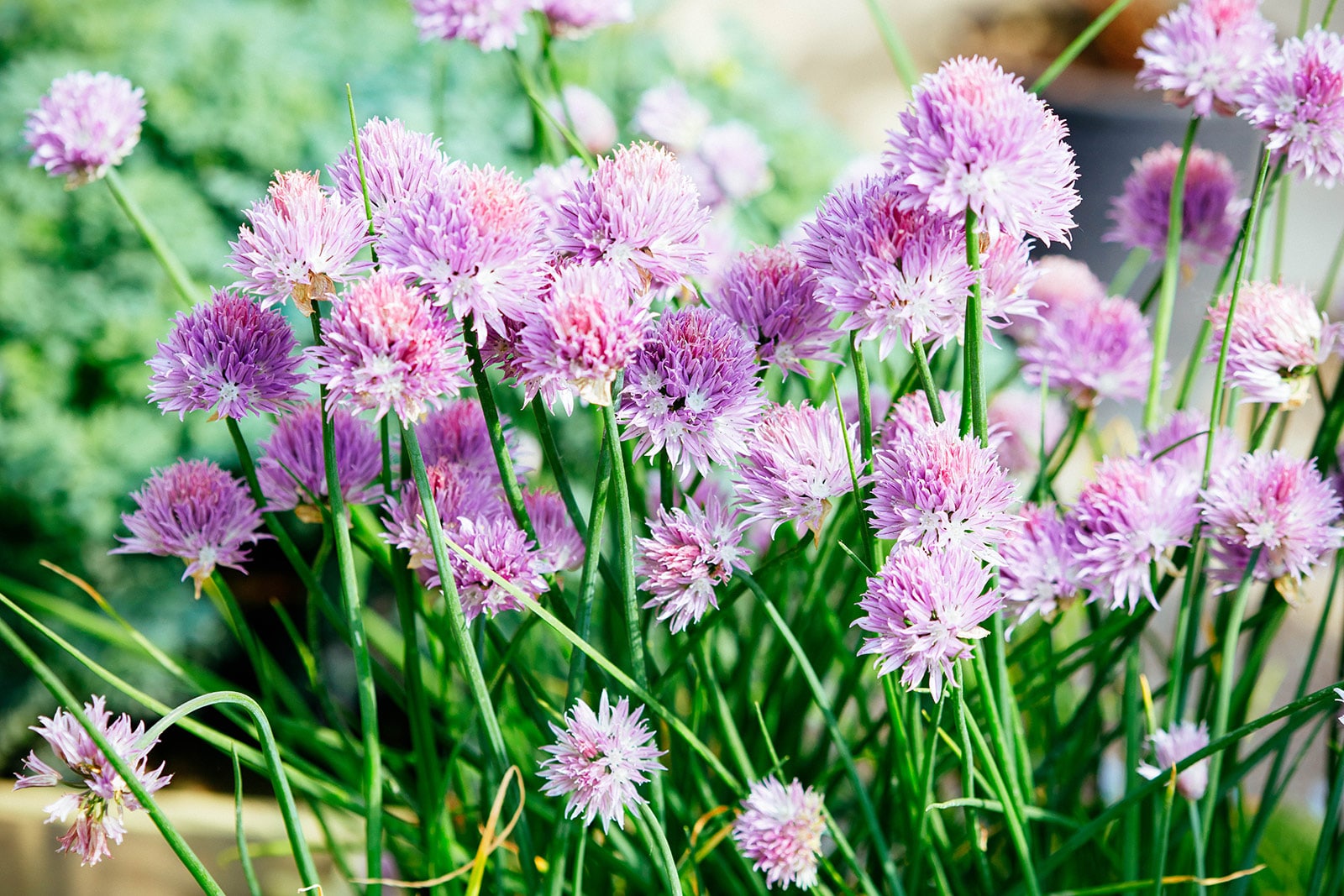
What are chive flowers?
You’re probably already familiar with chives, the long green stems that look like scaled-down versions of scallions. These perennial herbs go dormant in winter, looking all gangly and yellow for a few months, before they reemerge in spring with fresh green growth.
As spring starts sauntering toward summer, chive plants send up hollow flower stalks called scapes (similar to garlic scapes) and at the end of each scape is a tight lavender bud that develops into a flower.
Though chive blossoms look like single flower heads, you can see in this picture (of a maturing flower head) that they are actually tight clusters of many tiny flowers (called florets).
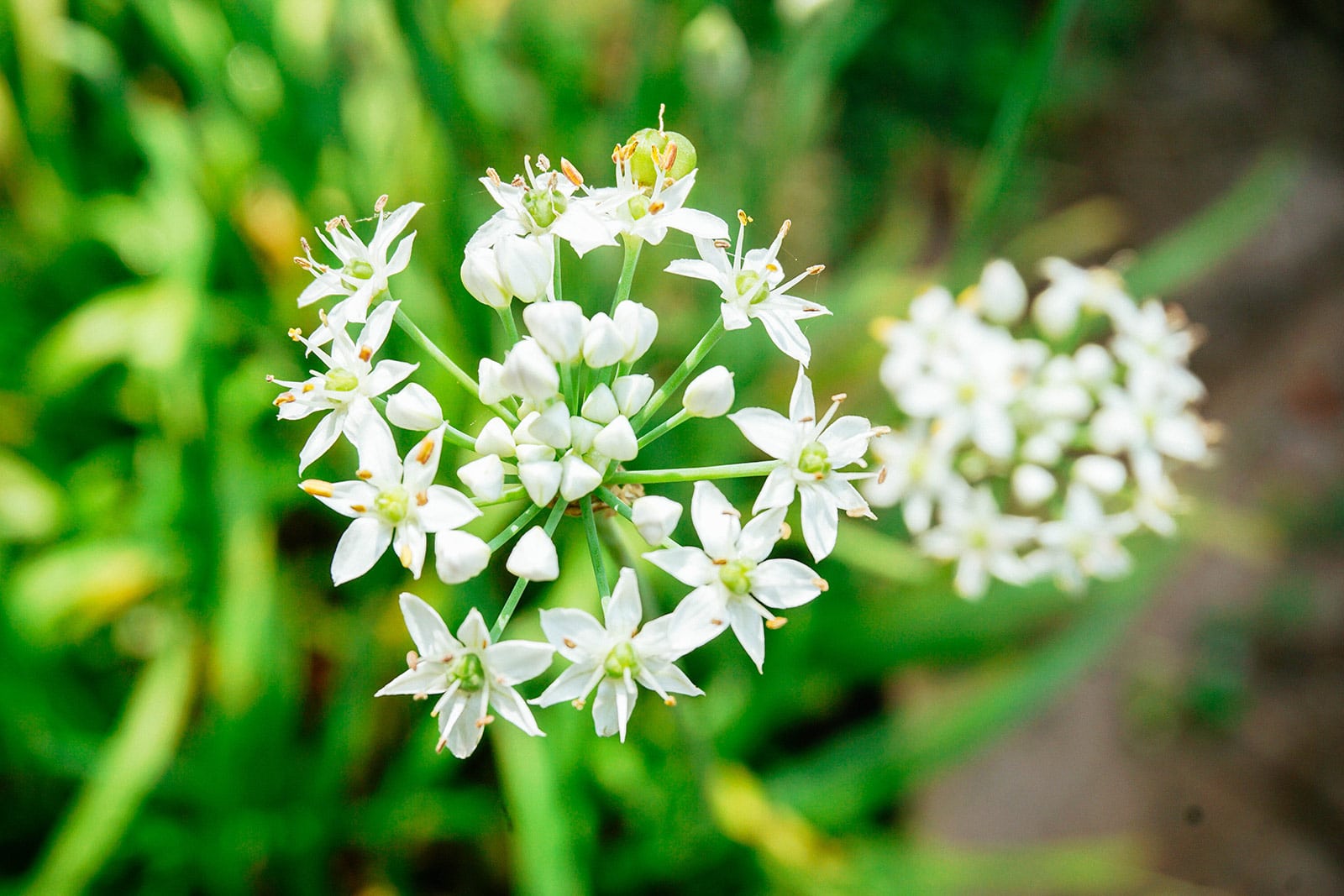
Onion chives or common chives (Allium schoenoprasum, which have thin, tubular stems) have pink or purple flowers, while garlic chives (Allium tuberosum, which have wide, flattened stems) have white flowers—aside from color and bloom time, their blossoms are virtually the same.
You’ll usually see onion chive flowers in late spring to early summer, while garlic chive flowers appear in late summer.
Once chives start to bloom, you can encourage more growth by continually harvesting small sections at a time or cutting them back completely, like you’re giving your plants a haircut. If you have a large patch of chives, consider letting part of it bloom for bees and other pollinators while you harvest the rest.
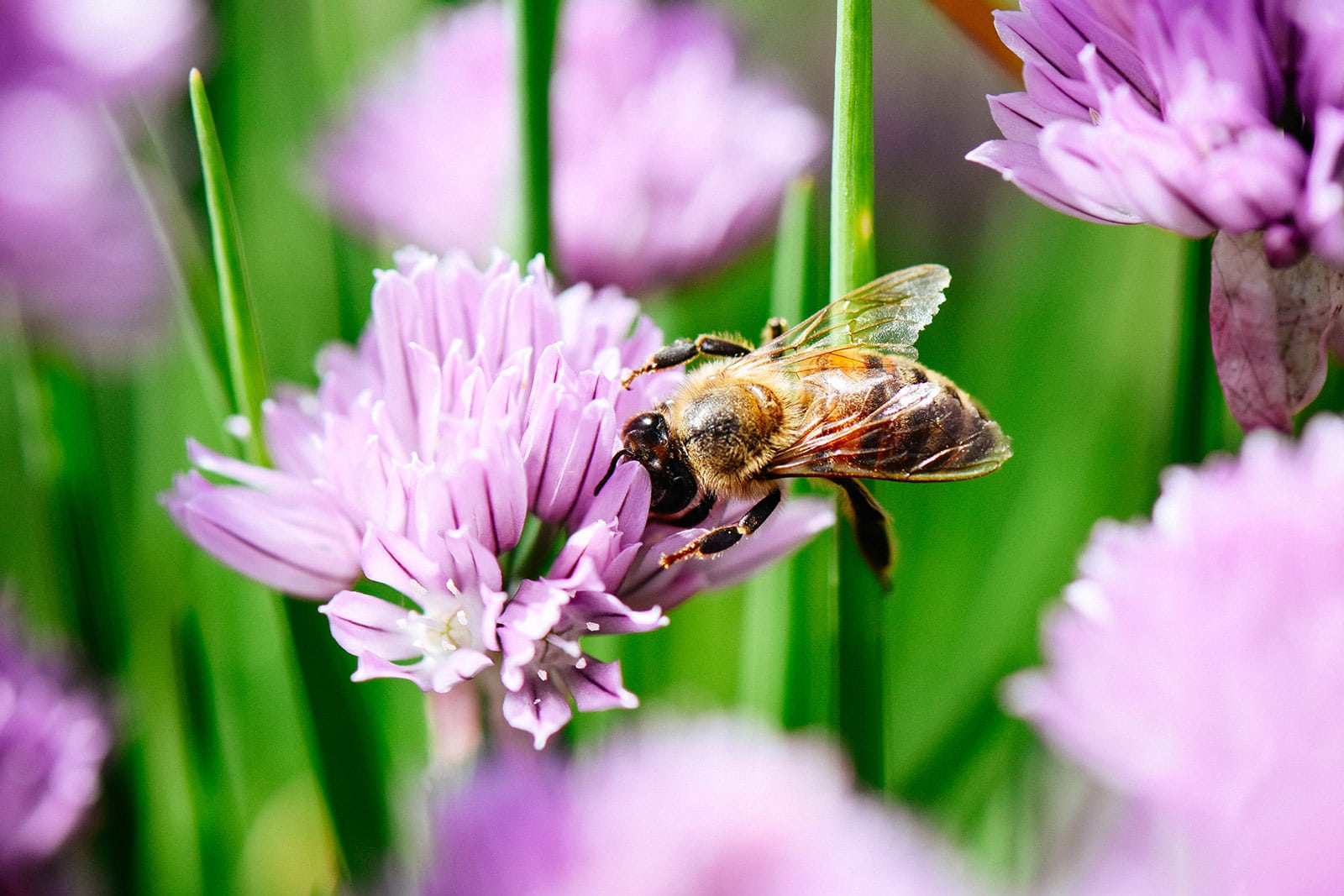
Are chive flowers edible?
The flowers from onion (common) chives and garlic chives are edible, just like the stems. You can eat chive blossoms raw, pickle them, deep-fry them, add them as an edible garnish, use them to flavor condiments, or sprinkle them into a dish as a seasoning.
Related: 11 Vegetables You Grow That You Didn’t Know You Could Eat
Not only are chive blossoms edible, they’re also good for you. Chives and their flowers are known to have a number of health benefits that are true of other alliums, like fighting against cancer, preventing osteoporosis, and improving memory.
Of course, the nutrients present in chives (such as choline, folate, and vitamins A, C, and K) are quite small since chives are often used as a garnish. But if you start using chives in place of green onions in all your recipes, you’ll gain more benefits from these nutritional compounds.
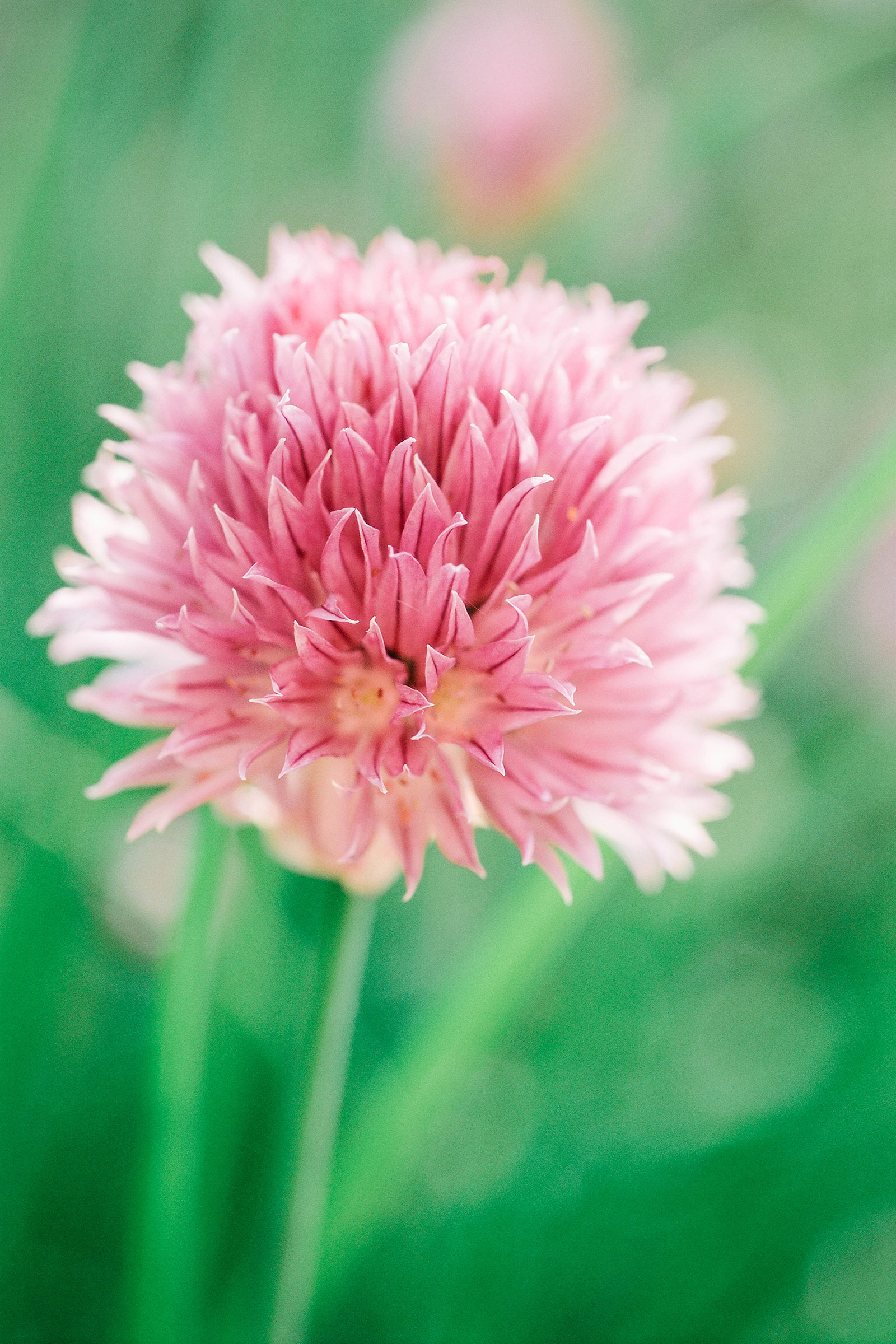
What do chive flowers taste like?
Chives belong to the genus Allium, which also includes garlic and onion. These plants are unique in that they’ve evolved with their own chemical defense systems to protect themselves from any kind of breach, whether it be biting, crushing, or cutting.
The chemical defenses deploy highly active sulfur compounds that irritate the skin, repel insects, kill microbes, and damage the red blood cells of dogs and cats. This is why you’ve cried while cutting an onion, heard about using homemade garlic sprays to deter pests, and been warned to keep onions and garlic out of a pet’s reach.
Interestingly, it’s these same sulfur compounds—which are meant to drive us away—that give alliums their distinctive and delicious flavors.
Different types of sulfur chemicals produce different flavors, and the ones in onion chives give them a savory “oniony” flavor. This flavor extends to the blossoms, though it’s more of a hint of onion that’s light and delicate enough to eat uncooked. With garlic chive blossoms, you can expect more of a garlicky flavor.
Since chive blossoms are milder than chives themselves, they’re perfect for pretty garnishes where you don’t want to overwhelm the other flavors in the dish.

Where can you find chive flowers?
If you don’t grow chives at home, you can usually find chive blossoms in specialty grocers and farmers’ markets in May and June. They’re hard to find after that as their season is short, so be sure to grab them if you see them.
Sometimes chives are bundled with the flowers and stems still intact, and sometimes you’ll only find chive blossoms packaged up for sale.
How to prep chive flowers
- Make sure the chive flowers are organically grown (like all herbs you eat). You want them to be free of pesticides and other contaminants.
- Wash your chive flowers before using. Simply dunk the flowers in a bowl of clean water, swish them around, then pat dry. This should remove any debris and teeny tiny bugs that take up residence between the florets.
- Use chive flowers whole or separate them into florets. If you want dainty wisps to sprinkle over your food, gently pull the florets away from the center of the flower head with your fingers.
- Store any unused chive flowers in the refrigerator. It’s best to store them whole, and I find it easiest to seal them inside a plastic bag or lidded container. They should keep for up to one week in the fridge.
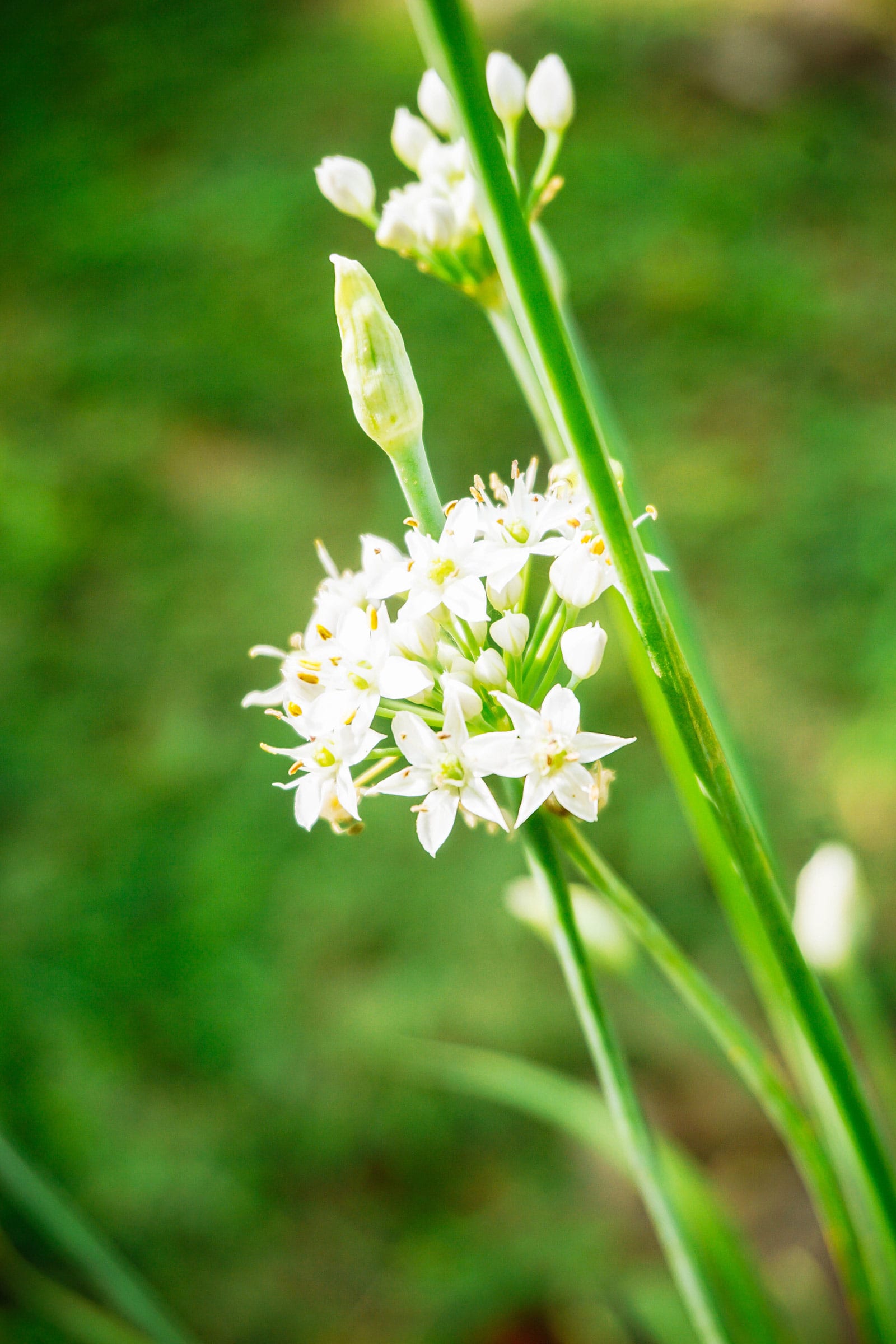
How to use chive flowers in your food
After you’ve separated all the florets, here are a few different ways you can use chive flowers in your everyday cooking:
- Garnish rice and noodle bowls.
- Garnish roasted vegetables, meats, fish, and poultry.
- Garnish bowls of soup at the table.
- Add them to herb-infused oils.
- Add them to herb-infused vinegars (or make chive blossom vinegar, below).
- Add them to salad dressings.
- Toss them with all kinds of salads (green, grain, pasta, tuna, egg, potato, or fruit salads).
- Stir them into softened butter or cream cheese.
- Stir them into brie, goat cheese, or other soft, spreadable cheese.
- Mix them into deviled egg fillings.
- Mix them into biscuit dough or savory pancake batter.
- Sprinkle them over your favorite aioli or dip.
- Sprinkle them over crackers and cheese.
- Sprinkle them over eggs, omelets, frittatas, crepes, toast, and other breakfast meals.
- Sprinkle them over polenta, mashed potatoes, smashed potatoes, or baked potatoes.
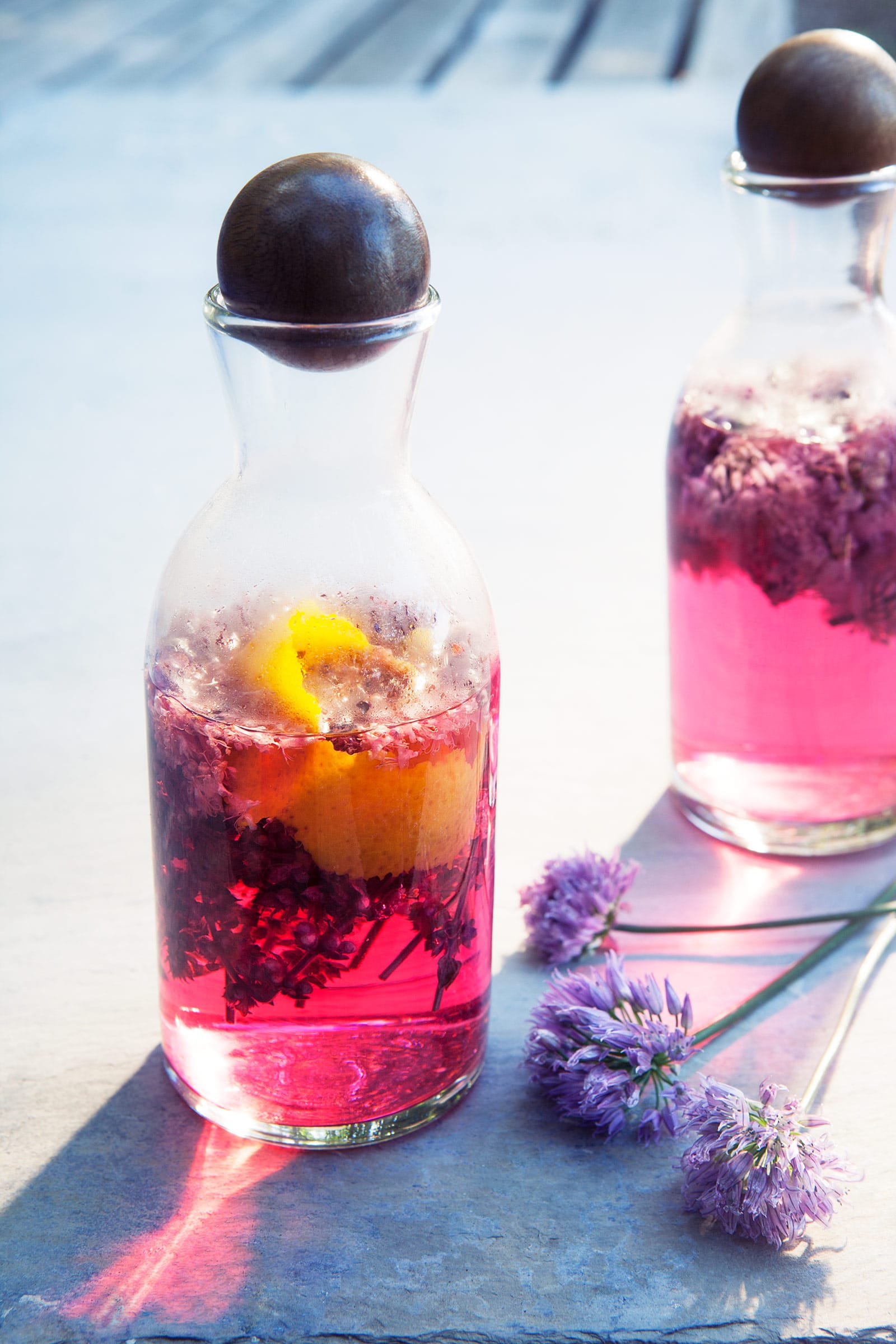
Quick and easy recipes using chive flowers
Chive blossom vinegar
Add 1 cup of loosely packed whole chive blossoms and 2 cups of white vinegar to a jar. Cover and let sit for a week or two in a cool, dry place out of direct sunlight. The chive blossom vinegar is ready when the liquid turns a stunning pink. At that point, you can use the vinegar as is or strain before using.
Get more recipes like this from my bestselling book, The No-Waste Vegetable Cookbook.
Pickled chive blossoms
If you made the chive blossom vinegar above, don’t throw out the flowers! They have an awesome pickled flavor and can be used as a garnish for salads, bloody marys, or even a martini.
If you just want to pickle chive flowers, you can reduce the amount of vinegar and use a 1:1 ratio of vinegar to flowers (for example, 1 cup of your favorite vinegar for every 1 cup of whole chive flowers). Submerge the flowers in vinegar overnight, then save the infused vinegar for another use.
Chive blossom butter
Make your own compound butter by stirring 2 tablespoons of chive florets into 8 tablespoons (1 stick) of softened room-temperature butter. Shape the butter into a log, wrap in plastic wrap or parchment paper, and freeze until ready to use.
When you want some chive blossom butter, cut off a chunk and melt it over grilled fish, roasted vegetables, or pasta (or let it soften at room temperature if you want to use it as a spread).
Tempura chive blossoms
Think onion rings, but cuter! To start, harvest whole chive blossoms with stems intact (you’ll be using these stems as a handle).
Pour enough sunflower oil into a deep-sided, heavy-bottom pan to reach a depth of about 1 inch. Place over medium to medium-high heat and heat the oil to 350°F.
Make the tempura batter by mixing 1 egg with 1 cup of very cold water. Add 1 cup of all-purpose flour and stir until smooth. Keep the batter cold until the oil is heated through.
Holding the chive blossoms by their stems, dip each flower head into the batter and tap it against the side of the bowl to let excess batter drip off. Carefully drop the coated chive blossoms into the hot oil and fry for about 1 minute. (They won’t brown very much.)
Transfer to a paper towel-lined platter, cut off the stems, and serve immediately with a sauce of your choice.
View the Web Story on how to use chive flowers.
This post updated from an article that originally appeared on April 20, 2011.


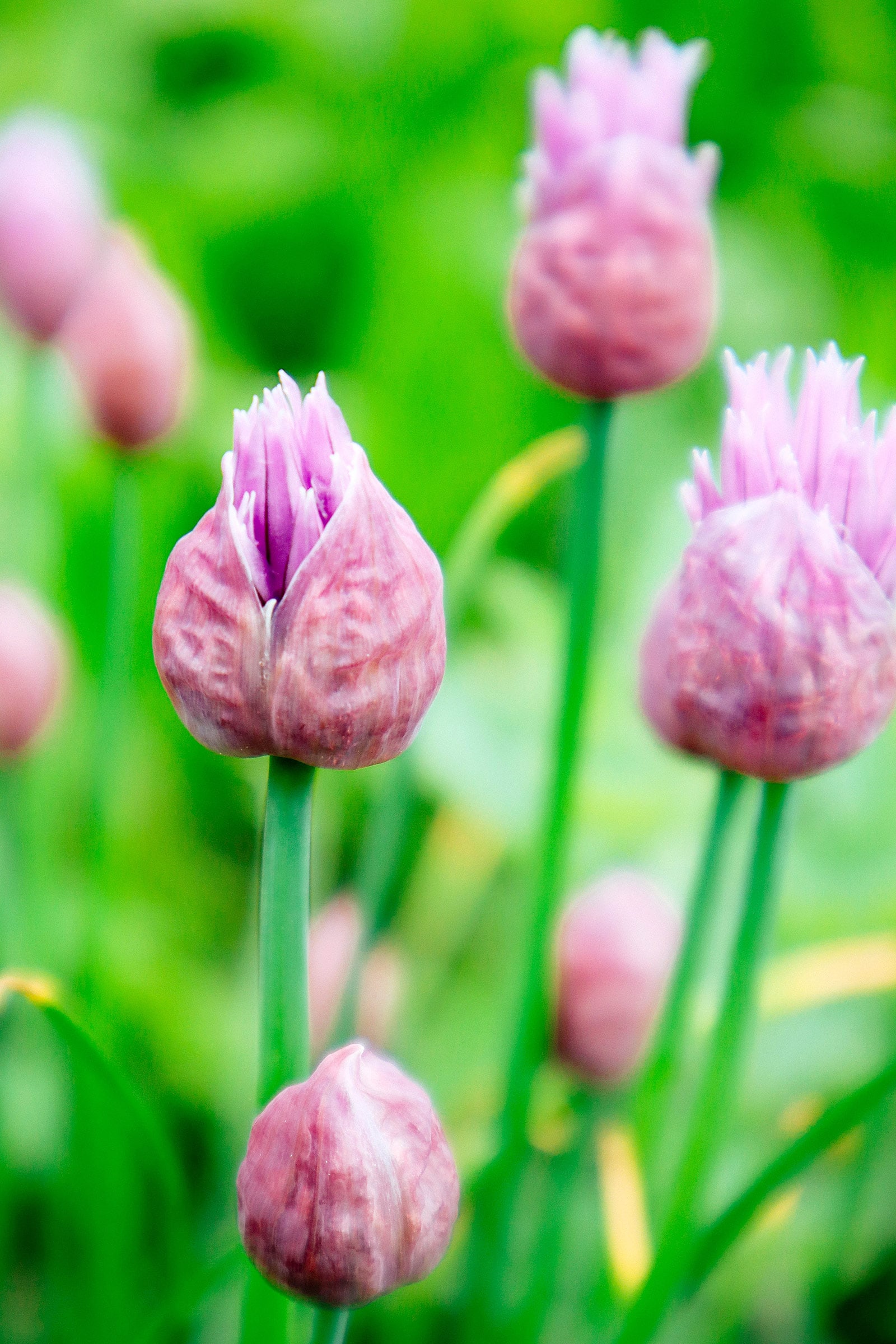













Great article, thanks for sharing the knowledge!
I had no idea! Just tasted one from my garden (probably should have washed it first, but I was so excited!). Tasty! Do you recommend a particular vinegar for this?
Thanks!
I used your “brew” for my tomatoes this year. And I love adding aspirin.
I have 3-4 times the foliage and blossoms as my neighbors.
Only 7.5 gal pots.
Winning formula!
I have been casually grazing on these in my chive garden for years. I had no idea of all the ways you can use them rather than just snacking, (not to mention the wee beasties you mentioned living there). As always thanks for delicious Ideas.
You’re welcome, I hope you try some of these ideas!